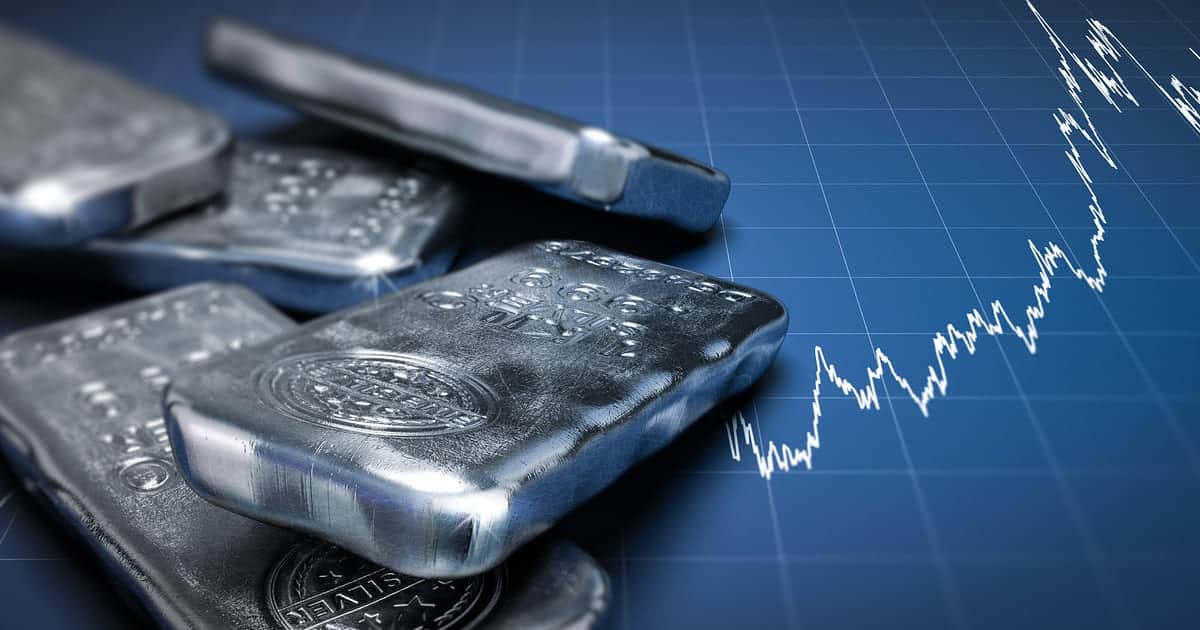
Believe it or not, the sons of a billionaire oil tycoon once cornered the market on the world’s silver supply, inflating its value by more than 700 percent. Their initial success, followed by a total unraveling of their scheme, is known as the story of Silver Thursday.
How the Hunt Brothers Cornered Silver
Nelson Bunker Hunt and William Herbert Hunt — oil company executives, investors and brothers — first began purchasing silver in the early 1970s at a price of less than $2 per ounce. The Hunt brothers’ fervor for silver accelerated dramatically following the death of their father in 1974, a Texas oil tycoon known as H.L. Hunt. His passing released a $5 billion fortune to members of the Hunt family.
Fueled by an enormous amount of capital, the Hunt brothers continued stockpiling silver and purchasing silver futures contracts. By early 1979, the price of silver had risen to about $6 per ounce. The Hunt brothers acquired roughly 195 million ounces of silver, about a third of the world’s total supply. They facilitated their silver purchases in part by investing in futures contracts through several brokers, including Bache Halsey Stuart Shields, Prudential-Bache Securities, and Prudential Securities. By December 1979, the market price for silver fluctuated between $20 and $25 per ounce.
Silver had become exorbitantly expensive even for practical uses. Doctors struggled to afford X-ray film for patients, families melted down their heirloom silver flatware, silver burglaries skyrocketed, and Tiffany’s & Co. was forced to drastically raise its jewelry prices. Tiffany’s even took out a full-page ad in the New York Times criticizing the Hunt brothers, writing, “We think it is unconscionable for anyone to hoard several billion, yes billion, dollars’ worth of silver and thus drive the price up so high that others must pay artificially high prices for articles made of silver.”
Silver reached a record high of $48.70 per ounce on Jan. 18, 1980. By some estimates, the Hunt brothers’ entire silver fortune peaked at a value of $10 billion.
Thursday, March 27, 1980
Facing out-of-control silver prices, COMEX (Commodity Exchange, Inc.), a division of the New York Mercantile Exchange (NYMEX), acted against the Hunt brothers. On Jan. 7, 1980, COMEX introduced Silver Rule 7, which placed heavy restrictions on the purchase of commodities on the margin.
Following its peak price of $48.70 per ounce, silver began its decline and the Hunt family’s silver fortune began to shrink.
On March 27, 1980, known as Silver Thursday, the price of silver dropped 50% in a single day, from $21.62 to $10.80 per ounce. The Hunt brothers failed to meet several margin calls and about $7 billion in paper assets suddenly turned into a $1.7 billion debt.
The sudden price drop threatened to collapse several investment firms and banks. To prevent widespread financial chaos, multiple banks joined together to issue the Hunt brothers a $1.1 billion line of credit.
Silver Manipulation Aftermath
Several years of criminal investigations, hearings before Congress and civil cases followed the Hunt brothers’ silver manipulation scheme.
In August 1988, a federal grand jury ordered Nelson Bunker Hunt, William Herbert Hunt and a third brother, Lamar Hunt, to pay more than $130 million in damages for conspiring to corner the world’s silver market and for ruining the investments of Minpeco, a mineral marketing company of the Peruvian government. By September 1988, both Nelson Bunker Hunt and William Herbert Hunt had filed for personal bankruptcy protection to avoid having to post a $225 million bond required for appealing a federal jury verdict against them. In December 1989, the Hunt brothers reached a settlement with the Commodity Futures Trading Commission. They were each ordered to pay fines of $10 million and were banned from trading in American commodity markets.
Members of the Hunt family suffered a huge loss of credibility following the silver manipulation scheme. Nelson Bunker Hunt eventually sold most of his assets. He died in 2014 under relatively modest circumstances. William Herbert Hunt, however, eventually recovered much of his fortune in the oil industry. As of 2019, Forbes estimated his net worth at about $2.6 billion. William passed away in 2024 at the age of 95.
Historical Attempts at Cornering Commodities
Unfortunately for investors, the Hunt brothers’ scheme was just one of several attempts at cornering commodities in recent history. Additional examples include:
2002: Chocfinger
Investment firm Armajaro Group purchased more than 150,000 tons in cocoa futures in August 2002, sending cocoa to a 17-year price high. Armajaro founder Anthony Ward was nicknamed Chocfinger for his ownership of more than 5 percent of global cocoa production. Prices peaked again in 2010 when Armajaro purchased over 240,000 tons of cocoa, roughly 7 percent of the world’s total cocoa supply. Following price fluctuations of cocoa and other commodities, Armajaro reported a net loss of $10.3 million by the end of September 2012.
1996: Mr. Copper
Over the course of more than 10 years, Yasuo Hamanaka, a trader at Sumitomo Corporation in Japan, hoarded one million tons of copper in an effort to keep prices up. At one point, he gained control of about 5 percent of the world’s copper and became known as Mr. Copper. On June 13, 1996, the Copper bubble burst and Sumitomo Corporation lost about 2.6 billion in the London Metal Exchange.
1955: Onion Futures
Traders Sam Siegel and Vincent Kosuga cornered the onion futures market on the Chicago Mercantile Exchange in 1955, at one point stockpiling more than 30,000,000 pounds of onions. The traders drove prices up to $2.75 per bag before flooding the market with onions, which drove prices down to just 10 cents a bag. Congress passed the Onion Futures Act in 1958, which banned the trading of onion futures on the Chicago Mercantile Exchange.




